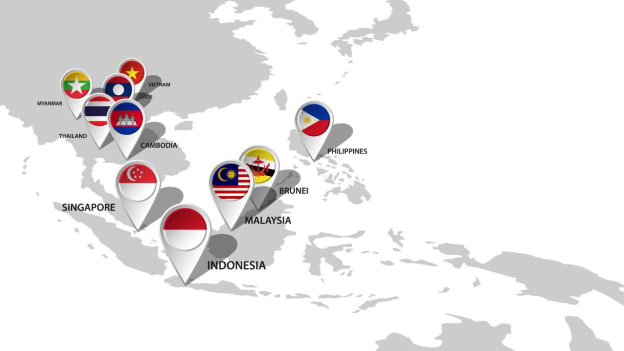How to solve organisational cultural challenges in Southeast Asia

A broken organisational culture in Southeast Asia must be identified and fixed if businesses are to succeed. Despite the region's promise, cultural problems frequently make reform initiatives difficult. Leaders must define, align, promote, and maintain a healthy culture. Each Southeast Asian country has its own distinct work culture, thus it is crucial to understand regional cultural quirks.
Symptoms of a broken organisational culture are clear: stalled initiatives, deteriorating employee morale, or negative customer feedback. Unfortunately, leaders often react to these issues with initiatives that fail to yield the desired results. In Southeast Asia, where cultural diversity is prevalent, understanding and addressing organisational culture is even more critical.
Defining culture
Leaders must start by defining or redefining their organisation's culture. Culture is how things are done within a company, and it varies from organisation to organisation. Rather than imposing a new culture, leaders should thoroughly examine their current culture, recognising its strengths, weaknesses, challenges, and unique attributes.
Leadership actions:
- Conduct interviews, surveys, and focus groups to understand the organisation's cultural DNA.
- Convene collaborative sessions to refine the company's purpose, core values, and specific behaviors.
Aligning the workforce
Cultural alignment is crucial for successful cultural transformation. Employees' connection to culture is vital for engagement and productivity. Leaders must connect individual goals to the organisation's purpose, vision, and strategies.
Leadership actions:
- Align culture explicitly with the organisation's strategy and future direction.
- Exhibit desired behaviors to demonstrate leadership commitment.
- Adapt to new work realities, such as hybrid formats.
Driving adoption
Driving employee adoption of culture requires more than superficial efforts. Leaders must link culture to the organisation's mission and brand, making it real through behavioral change, processes, and policies. Authenticity and meaningfulness matter more than slogans or giveaways.
Leadership actions:
- Communicate the purpose and culture through a well-defined change storyline.
- Consider how shifts in policies or expectations can drive desired culture change.
- Use storytelling to reinforce cultural behaviors.
Sustaining the ecosystem
Culture is a living ecosystem that needs continuous nurturing. Systems, structures, and rituals must support cultural behaviors. Managers play a crucial role in sustaining culture and balancing cohesion and individualization.
Leadership actions:
- Ensure systems, structures, and processes support culture change.
- Use storytelling to reinforce cultural behaviors.
- Redesign recognition processes and build managers' knowledge of cultural behaviors.
- Employ appropriate feedback mechanisms and outcome metrics.
Culture transformation in Southeast Asia
The Southeast Asian business landscape offers immense potential, but recognising and addressing a broken culture is essential for success. Each country in the region has its unique cultural nuances, making it imperative for leaders to adapt their strategies accordingly.
How to better understand the Southeast Asian Cultures
Singapore: Balancing collectivism, hierarchy, and innovation is key. Striking a balance between stability and innovation is crucial in the cosmopolitan city-state.
Malaysia: Bridging relationships and respecting religious values is essential. Building trust and accommodating religious practices are significant factors in Malaysian workplace culture.
Indonesia: Practicing good manners and maintaining workplace harmony is important. A non-confrontational approach to communication and respect for authority are prevalent in Indonesian culture.
The Philippines: Honing cross-cultural adaptability with pride is a strength. Filipinos excel in adapting to different workplace cultures while taking pride in their work.
Vietnam: Embracing hierarchy and promoting resourcefulness and dependability. Vietnamese culture values hierarchy and non-confrontational approaches, but employees are known for their hard work and resourcefulness.
Addressing a broken organisational culture in Southeast Asia requires a holistic approach, considering each country's unique cultural characteristics. Leaders who understand, align, drive, and sustain a healthy culture can unlock the region's potential and achieve long-term success.
















